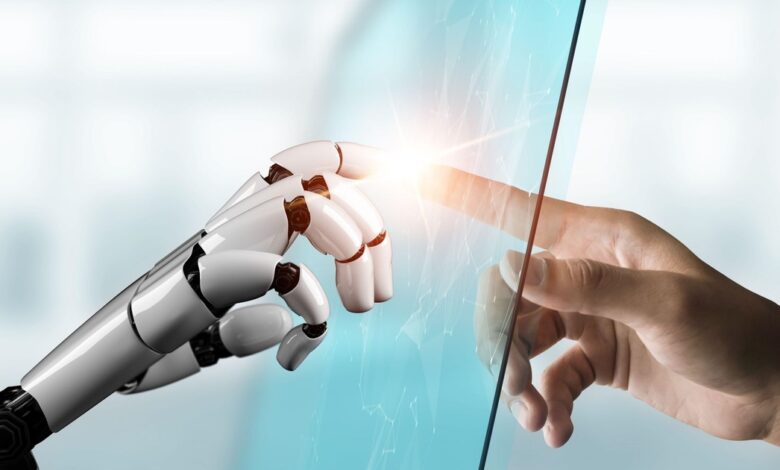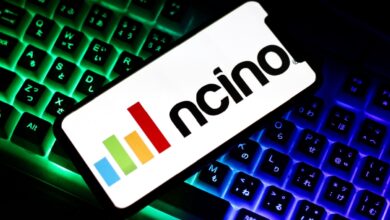How Companies Can Retain Employee Trust During the AI Revolution

If it’s not abundantly clear that artificial intelligence adoption is happening at break-neck speed, consider that it is on track to grow faster in its first two years than the adoption rate of smartphones and tablets — combined.
The integration of AI will inevitably pose challenges to the established status quo, particularly for employees. Recent surveys of employees find that anywhere from 43% to 53% of them are concerned that AI deployments could come at the cost of their jobs. For proof, one need only look at the recent announcement from IBM, which said it plans to replace 8,000 jobs with AI.
It’s not unreasonable to conclude that nearly 50% of employees within an enterprise harbor concerns about how AI could affect their livelihoods, especially given predictions that generative AI could lead to an average reduction in headcount of 5% across global businesses (reaching as high as 30% in certain sectors). The apprehension and concern are very real for the employees who could potentially be among the first to go.
As enterprises increasingly invest in AI-driven technologies to streamline operations and make critical decisions, building employee trust in AI within the enterprise will be paramount for success. Enterprise leaders who ignore employee concerns do so at their peril. When faced with a threat to jobs, employees may react in ways that could threaten the ROI of the AI investment.
Employee resistance comes in many forms but the majority stems from a fear of losing jobs, leading to more absenteeism, lower morale, reductions in productivity, and poor adoption of new technology. In more extreme cases, you might have the very people in charge of deploying, maintaining, and optimizing an AI solution contributing to its ineffectiveness.
Establishing trust is not a one-time endeavor. Here, we delve into a set of principles, partly based on change management, that enterprise leaders can consider cultivating trust in AI within their organization now and into the future.
Transparency and Open Communication
Communicating openly about AI initiatives, objectives, and potential impacts is essential for building trust within the enterprise. Leaders should proactively communicate with employees about the rationale behind AI adoption, its benefits, and any potential changes to job roles. Creating opportunities for transparent feedback and addressing employee concerns will vary across organizations, but many may include internal newsletters, online Q&As, and periodic companywide town halls that speak to the company’s AI journey. Remember, job insecurity is the primary driver of employee fear and anxiety so creating opportunities to speak honestly and empathetically about it will help build trust and ensure a path towards more successful AI adoption.
Employee Sentiment
As AI technology evolves rapidly, leaders who are steadily attuned to the needs, concerns, and sentiments of their employees will be better positioned to identify areas for improvement, address potential issues before they escalate, and foster a culture of openness and collaboration within their organization.
Ongoing education and training are essential for empowering employees to adapt and embrace AI-driven changes effectively. For example, comprehensive training programs on AI fundamentals, best practices, and ethical considerations can help demystify AI and alleviate fears of job displacement. Moreover, maintaining a strong connection with employees by investing in their professional development through resources such as counseling, job transition support, and retraining instills trust, loyalty, and a sense of belonging.
Ethical AI Governance
What is your company’s internal-facing roadmap for AI adoption? Have you surveyed employees to measure their buy-in? Establishing guiding principles and accountability structures for oversight serve as the compass that steers organizations toward building trust in AI within the enterprise.
This includes defining clear roles and responsibilities for AI governance, implementing mechanisms for monitoring AI performance and outcomes, and establishing channels for reporting and addressing concerns. By holding themselves accountable for the ethical and responsible use of AI, organizations can reinforce trust and credibility among employees and other stakeholders.
Chief AI Officer
Leaders should also consider appointing an AI change agent, possibly at the C-suite level, to collaborate closely with employees and leadership to bridge the gap between technical intricacies and organizational dynamics. In this capacity, the CAIO will help lay the foundation for successful AI integration within the enterprise by ensuring employees grasp the benefits and implications of AI adoption to catalyze trust and facilitate seamless transitions amid AI deployments.
The CAIO will prove a vital liaison between frontline employees and upper management. They can advocate for transparency, fairness, ethical considerations as well as ensure AI investments yield their desired returns. Their role will help establish a valuable feedback loop as they collaborate closely with employees encountering challenges and concerns working alongside AI while directly engaging with the enterprise leaders to address these issues effectively.
Final Thoughts
Building trust in AI within the enterprise is a multifaceted endeavor that requires transparent communication, collaboration, education, and risk management. The strategies outlined in this article are not intended to be a rigid blueprint for AI implementation or ensuring employee satisfaction; however, we advise adhering to best practices in change management, especially given the potentially significant impacts that AI implementation can have on enterprises.
Prioritizing these strategies can help enterprises foster a culture of trust and harness the transformative power of AI alongside a workforce that is confident, empowered, and ready to embrace the opportunities that it brings to the table.



